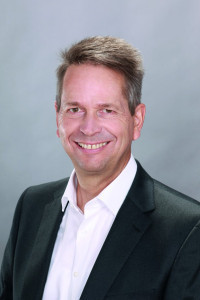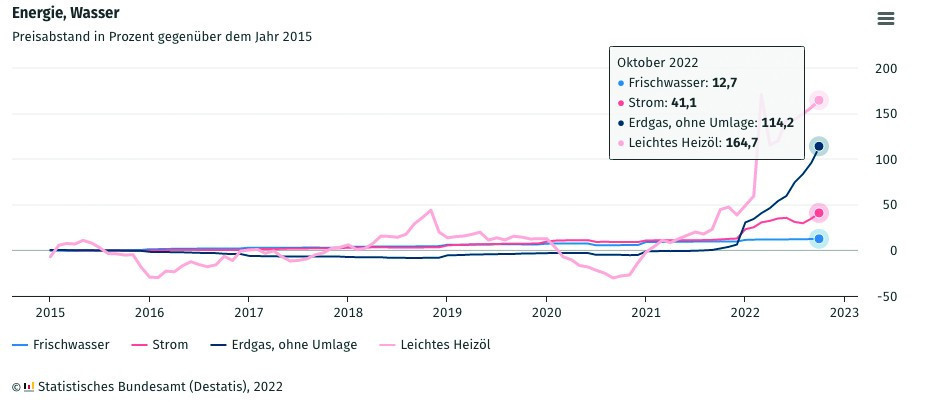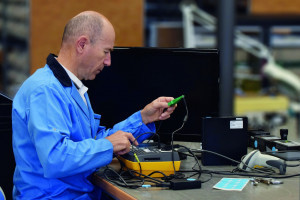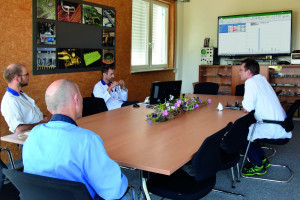How are companies and service providers in the PCB industry responding to the ongoing energy crisis, which is affecting them to varying degrees? PLUS has collected some voices and reports from the industry.
 Norbert Schallhammer, external environmental and energy management officer at the TQ Group (Image: TQ Group)The bad news in the industry shows no sign of abating. The extreme price increases for electricity and gas are putting companies under severe pressure - and end consumers, shaken by the highest inflation rate since 1951, are reacting with reluctance to buy. The forecasts for 2023 are correspondingly meagre. This is because the main causes - the war in Ukraine and the energy shortage in the wake of economic sanctions against Russia - will not disappear in the foreseeable future.
Norbert Schallhammer, external environmental and energy management officer at the TQ Group (Image: TQ Group)The bad news in the industry shows no sign of abating. The extreme price increases for electricity and gas are putting companies under severe pressure - and end consumers, shaken by the highest inflation rate since 1951, are reacting with reluctance to buy. The forecasts for 2023 are correspondingly meagre. This is because the main causes - the war in Ukraine and the energy shortage in the wake of economic sanctions against Russia - will not disappear in the foreseeable future.
Or is the worst already over? While the inflation rate in the eurozone was still at 10.6% in October, European statistics Eurostat recorded a slight fall to 10.0% in November.
Although energy prices are still significantly higher than a year ago, there was a fall in November compared to October. However, higher gas consumption due to the weather is now causing the expected price increase on the European spot market [2].
According to an estimate by the Leibniz Institute for Economic Research at the University of Munich (ifo Institute), the high energy costs are leading to real income losses of around € 64 billion, or the equivalent of 1.8% of economic output [3]. Industries such as the German chemical and pharmaceutical sectors are reacting with price increases and cutting back on production [4], while the chemical group BASF is even no longer ruling out job cuts at its main plant in Ludwigshafen [5].
According to a survey by the DIHK (Association of German Chambers of Industry and Commerce), German companies still consider their business situation to be good despite pessimistic forecasts. However, investment intentions are not focused on the eurozone due to energy costs: just under 39% of the companies surveyed stated that they wanted to make higher investments in the USA in the coming months [6]. According to its CEO Andreas Gerstenmayer, the Austrian technology group AT&S is also currently considering investing "in America as part of the US Chips Act" [7]. The reason for this is not so much the energy costs as the far too low subsidies under the Chips Act proposed by the EU Commission [8].
 Image: Federal Statistical Office
Image: Federal Statistical Office
The energy crisis and the unclear forecasts for future developments therefore appear to be having an exacerbating effect. How is the local PCB industry and EMS service providers dealing with this reality? A comprehensive overview of the entire industry is hardly possible. However, it is possible to look into the cards of individual market participants. After all, the energy crisis ultimately affects everyone.
Lauffer presses (laminating technology for rigid and flexible printed circuit boards)
 The standby consumption of many devices is precisely measured by specialists (Image: Kraus Hardware)"In addition to personnel costs, material costs are the main cost drivers in mechanical and plant engineering, accounting for 40 to 45%. If we at Lauffer look at the last twelve to fourteen months, steel prices have risen by an average of 30%, castings by 25% and electronic components by 10%. We do not see any easing here due to rising freight and energy allocation costs. On the contrary - we expect further cost increases of 10% on average in 2023.
The standby consumption of many devices is precisely measured by specialists (Image: Kraus Hardware)"In addition to personnel costs, material costs are the main cost drivers in mechanical and plant engineering, accounting for 40 to 45%. If we at Lauffer look at the last twelve to fourteen months, steel prices have risen by an average of 30%, castings by 25% and electronic components by 10%. We do not see any easing here due to rising freight and energy allocation costs. On the contrary - we expect further cost increases of 10% on average in 2023.
When looking at energy costs, we differentiate between electricity and gas costs. In the past twelve months, our average electricity price has risen by 21 %, and we expect electricity costs to double in 2023.
Due to our contractually fixed gas price until the end of 2023, we have had no cost increases for gas to date. If the contract is terminated, we can expect the price of gas to increase sevenfold in 2023.
Lauffer heats its office areas and hot water using a central gas heating system and our production halls using gas radiators. We use gas to heat the spray booths and to dry the paint application.
If the gas supply were to stop in winter, we would only be able to produce to a very limited extent at temperatures below 15° C. For this reason, we are currently looking at the alternative of liquid gas in order to have a second source of energy."-mh-
KSG Gornsdorf (printed circuit board manufacturer)
The company KSG in Gornsdorf drew early conclusions from the rapidly rising energy costs and decided to vacate the administration building in the summer. According to Managing Director Margret Gleininger, all of the active employees initially worked from home and she herself moved her workplace to the production area [9].
TQ Group (EMS system supplier)
TQ Group environmental and energy management officer Norbert Schallhammer (ext.) answered questions from PLUS on how to deal with the energy crisis.
Where do the biggest energy costs (electricity & heating energy) arise in your area?
Our core activity is electronics production, which is why electricity is the main driver of energy costs for the TQ Group. However, due to recent developments on the gas market, the cost of heating energy will soon also rise significantly.
To what extent does the increase in gas costs affect you?
We need a small amount of gas in production, namely for painting work. We also use it as heating energy and for our combined heat and power plant to generate electricity and thermal energy. The combined heat and power plant is part of our plan to become climate-neutral by 2025. We set ourselves this goal almost four years ago and are currently on the home stretch to achieving it. The measures taken also include photovoltaic systems and the conversion of the company car fleet to e-cars. Overall, we were able to reduce our reportedCO2 emissions by 86% by the end of 2020.
What strategy are you pursuing to counter the increase in costs? (Savings models, production changeover)
We have developed and are already implementing a comprehensive company-wide energy-saving action plan across all sites. This includes, for example, the use of efficient lighting solutions, the implementation of more energy-efficient production processes and the promotion of our own products for efficient energy management. We have also switched to spot market models for energy procurement in order to reduce excessive energy costs.
How would your company deal with this if, for example, gas had to be (further) rationed?
As part of our action plan, we had already defined areas that we currently no longer heat or only heat to such an extent that there is no risk of structural damage. If further restrictions become necessary, we can expand this approach and further reduce our actively used areas.
How should industry deal with rising energy costs in the long term?
First of all, it is important that companies systematically identify, evaluate and realize potential energy savings for all sectors. The next step is to operate the optimized structures as efficiently as possible. Last but not least, a long-term procurement strategy for the energy required is also necessary, ideally based on a balanced mix of different energy sources and thus minimizing one-sided dependencies in the future. Finally, we also believe that politicians have a duty to provide companies with the best possible support in this situation.mh-
KRAUS Hardware (EMS service provider)
 The new energy team regularly discusses potential savings (Image: Kraus Hardware)Energy prices are reaching dizzying heights and putting a strain on the earnings of even small and medium-sized EMS companies. In this respect, the call of the hour is: save energy! The example of Kraus Hardware in Großostheim shows which 'adjusting screws' can be used to achieve this in detail.
The new energy team regularly discusses potential savings (Image: Kraus Hardware)Energy prices are reaching dizzying heights and putting a strain on the earnings of even small and medium-sized EMS companies. In this respect, the call of the hour is: save energy! The example of Kraus Hardware in Großostheim shows which 'adjusting screws' can be used to achieve this in detail.
The company with around 35 employees consumed a total of 105,000 kWh of electricity last year. In addition, there is 15,000 kWh of electricity for the heat pump - there is no gas consumption for heating. If the heat pump's output is not sufficient in winter, an old oil burner is still available in the company's basement as a 'silent reserve'. "However, we still burn the heating oil here that we acquired when we bought the building 15 years ago. So the appliance is very rarely used," explains partner Andreas Kraus.
In other words, the company operates almost entirely without fossil primary energy sources. However, those responsible are increasingly focusing on electricity consumption. One of the levers here is the use of 'switching current' instead of 'continuous current': all workstations have the option of accessing individual areas of the building technology via computer. In this way, the power supply to your own desk or other areas of your own workplace can be cut, thus avoiding the unnecessary standby power of many devices at night. The settings for overarching technology such as the hot water boiler are made by the administrator. "We generally only need a workstation for a maximum of ten hours, five days a week," says Andreas Kraus. "So there would be a lot of unused standby power here." Interestingly, the specialists know exactly how much power is involved in each case because the measurement logs from the DGUV test provide information about the quiescent current. A large presentation monitor, for example, proved to be a real 'energy monster' with an annual standby consumption of around 230 KW. In addition, there are many smaller continuous consumers such as the charging cradles of DECT telephones or the PCs.
On the other hand, there are a number of devices that must not always be switched off by the switching current. These include workstation computers that are used to back up data after work. In addition, various cell phones need to be charged after work. For this reason, manual switching on of the power (which is also possible) is slightly restricted: Anyone attempting this will receive a prompt asking whether the computer should be shut down with a delay of one hour. The data backup is performed during this time.
A special case at Kraus Hardware, as at many companies, is the issue of compressed air: On the one hand, it is often indispensable and on the other, it requires a large amount of energy, which is why the compressed air supply in the building is switched off at the end of work - with one exception: the automatic roller bearing (MLT) is permanently flooded with dried compressed air in order to protect the components from moisture. In an initial test, the specialists therefore masked off the inlet and outlet chute for a weekend, measured the power consumption and compared it with a previous measurement (without masking). The result: it fell from 3 to 1.5 kWh, which corresponds to an annual saving of at least 8,500 kWh. As a result, a new cover is currently being installed for the inlet and outlet of the MLT.
Overall, Kraus sees hardware energy saving as an ongoing process - so the optimizations are always continuing. This is also supported by the newly established energy team, which is working on further proposals. "We want to implement the savings as consensually as possible and involve everyone," says Andreas Kraus. "Ultimately, implementation depends on many small measures that are implemented by the employees on their own responsibility. For example, we have long made sure that machines with energy-intensive processes are only switched on when they are needed for several hours. I am optimistic that we will be able to reduce our energy consumption by around 10 to 15 % in the next few weeks."-G. Wagner-
https://lauffer.de, www.ksg-pcb.com
www.tq-group.com, www.kraus-hw.de
References
[1] Quote from the German publicist Peter E. Schuhmacher (†2013)
[2] www.agrarheute.com/markt/diesel/gaspreise-steigen-wintereinbruch-gaskunden-verunsichert-600804
[3] www.ifo.de/DocDL/sd-2022-11-nierhaus-wollmershaeuser-realeinkommensverluste-energiekrise.pdf
[4] www.manager-magazin.de/unternehmen/industrie/basf-covestro-und-co-der-chemiebranche-stehen-weitere-dunkle-monate-bevor-a-101eb909-f9ab-4064-8345-6c6486b12906
[5] Süddeutsche Zeitung, October 12, 2022
[6] www.dihk.de/resource/blob/86140/438313daa0f0f376066ab40210f3c73c/ahk-world-business-outlook-herbst-2022-data.pdf: p. 4f
[7] www.handelsblatt.com/technik/it-internet/chipindustrie-europaeische-technologie-branche-schlaegt-alarm/28823906.html
[8] Our interview with Andreas Gerstenmayer at electronica, p. 1613
[9] Katja Lippmann-Wagner: 'Electricity saving course: Gornsdorf company pulls administration building empty', Freie Presse, 25.08.2022

![Squaring the price [1]](/images/2024/03/20/f9683adb1948bc7d04d330f3edeb46a7_large.jpg)
